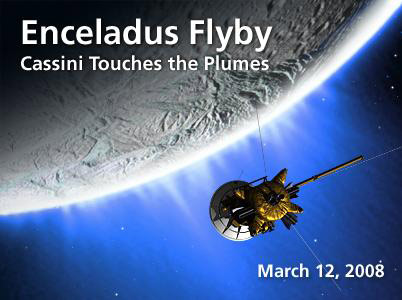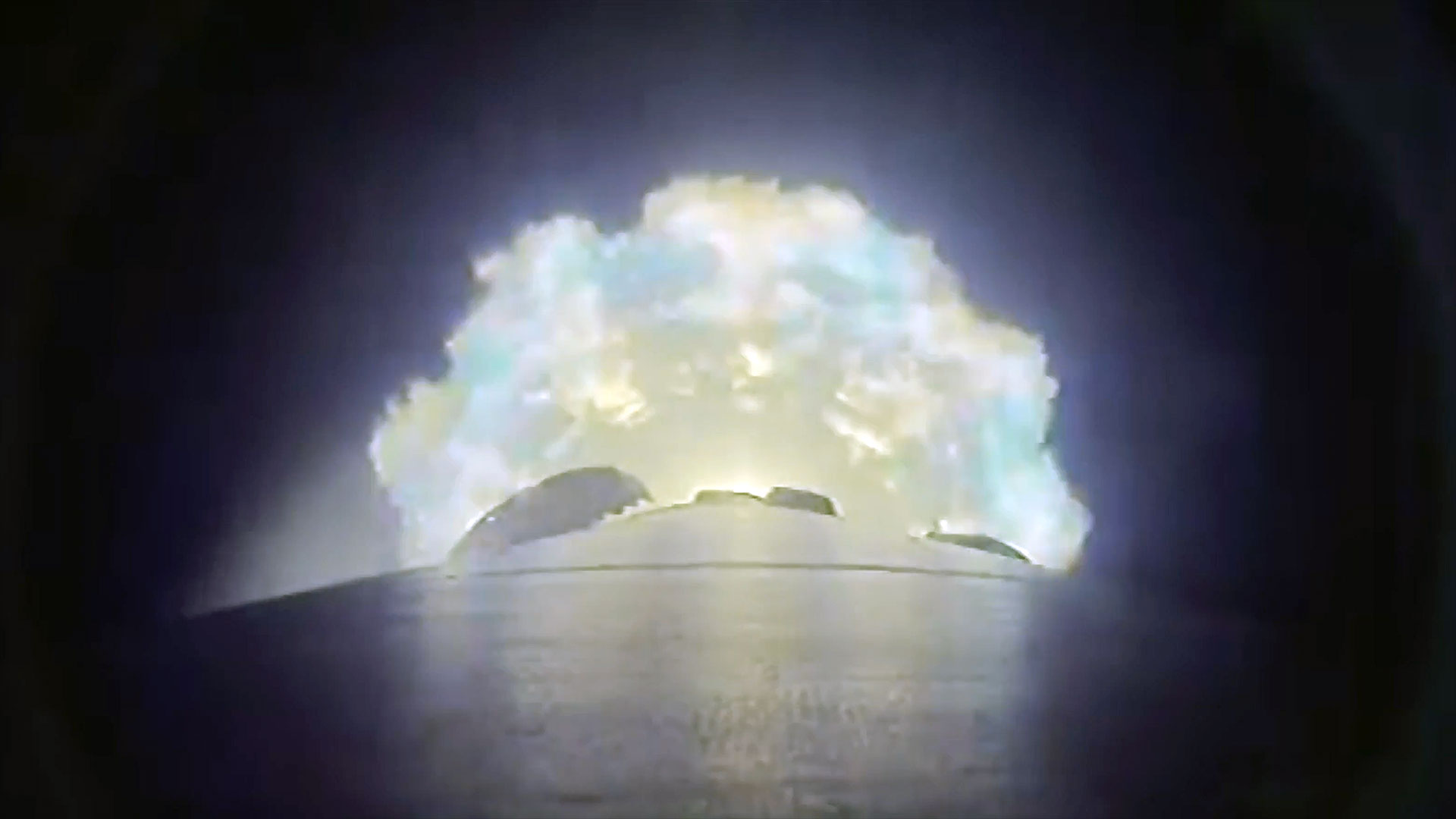Spacecraft to Plunge Through Saturn Moon's Icy Plume

NASA’s Cassini spacecraft circling the planet Saturn will plunge through the outer fringes of an icy plume spewing out from cracks in one of the ringed world’s many moons on Wednesday.
Cassini will zip through the edges of immense frozen water vapor geysers gushing from fractures in the south polar region of Saturn’s moon Enceladus. The flyby is Cassini’s first of four swings past icy Enceladus this year, where the spacecraft will use onboard instruments to “sniff and taste” the satellite’s Old Faithful-like water-ice eruptions, mission managers said.
"This daring flyby requires exquisite technical finesse, but it has the potential to revolutionize our knowledge of the geysers of Enceladus,” said Alan Stern, associate administrator of NASA’s science mission directorate, in a statement.
At its closest approach, Cassini will skim just 32 miles (52 km) above the surface of Enceladus before passing through the moon’s icy plume at an altitude of about 120 miles (193 km). The spacecraft will zoom past Enceladus at about 32,234 mph (51,875 kph), snapping photos during on approach and departure that will return the first-ever views of some northern regions, NASA officials said.
But Cassini will use particle analyzers during the flyby itself to determine the exact make up of the moon’s odd plume material, which contains water vapor and traces of carbon dioxide, methane and other gases.
"We want to know if there is a difference in composition of gases coming from the plume versus the material surrounding the moon,” said Hunter Waite, principal investigator for Cassini's Ion and Neutral Mass Spectrometer at the Southwest Research Institute. “This may help answer the question of how the plume formed."
Cassini first spotted Enceladus’ icy plume in 2005, when its onboard instruments recorded water vapor geysers rushing out to distances of up to three times the 310-mile (499-km) wide moon’s diameter. The ice particles themselves are tiny, just one ten-thousandth of an inch - or about the size of the width of a human hair - but jet out of Enceladus at about 800 mph (1,287 kph).
Breaking space news, the latest updates on rocket launches, skywatching events and more!
The apparently continuous eruptions appear to periodically give Enceladus a fresh coat of surface material and spew out ice dust that bolsters Saturn’s faint E-ring.
Cassini researchers already know that there are at least two types of particles - pure water-ice and water-ice intermixed with other material - in Enceladus’ plume.
"We think the clean water-ice particles are being bounced off the surface and the dirty water-ice particles are coming from inside the moon,” said Sascha Kempf, deputy principal investigator for Cassini's Cosmic Dust Analyzer at the Max Planck Institute for Nuclear Physics in Heidelberg, Germany. “This flyby will show us whether this concept is right or wrong."
Cassini mission managers will watch how their spacecraft weathers Wednesday’s Enceladus flyby to aid planning for additional swings past the Saturnian moon. Cassini is due to make seven trips past Enceladus during its extended mission, and could swing closer to the moon should this weeks’ rendezvous go well, NASA officials said.
- VIDEO: Enceladus, Cold Faithful
- IMAGES: Cassini's Latest Discoveries
- Special Report: Cassini’s Mission to Saturn

Tariq is the award-winning Editor-in-Chief of Space.com and joined the team in 2001. He covers human spaceflight, as well as skywatching and entertainment. He became Space.com's Editor-in-Chief in 2019. Before joining Space.com, Tariq was a staff reporter for The Los Angeles Times covering education and city beats in La Habra, Fullerton and Huntington Beach. He's a recipient of the 2022 Harry Kolcum Award for excellence in space reporting and the 2025 Space Pioneer Award from the National Space Society. He is an Eagle Scout and Space Camp alum with journalism degrees from the USC and NYU. You can find Tariq at Space.com and as the co-host to the This Week In Space podcast on the TWiT network. To see his latest project, you can follow Tariq on Twitter @tariqjmalik.
